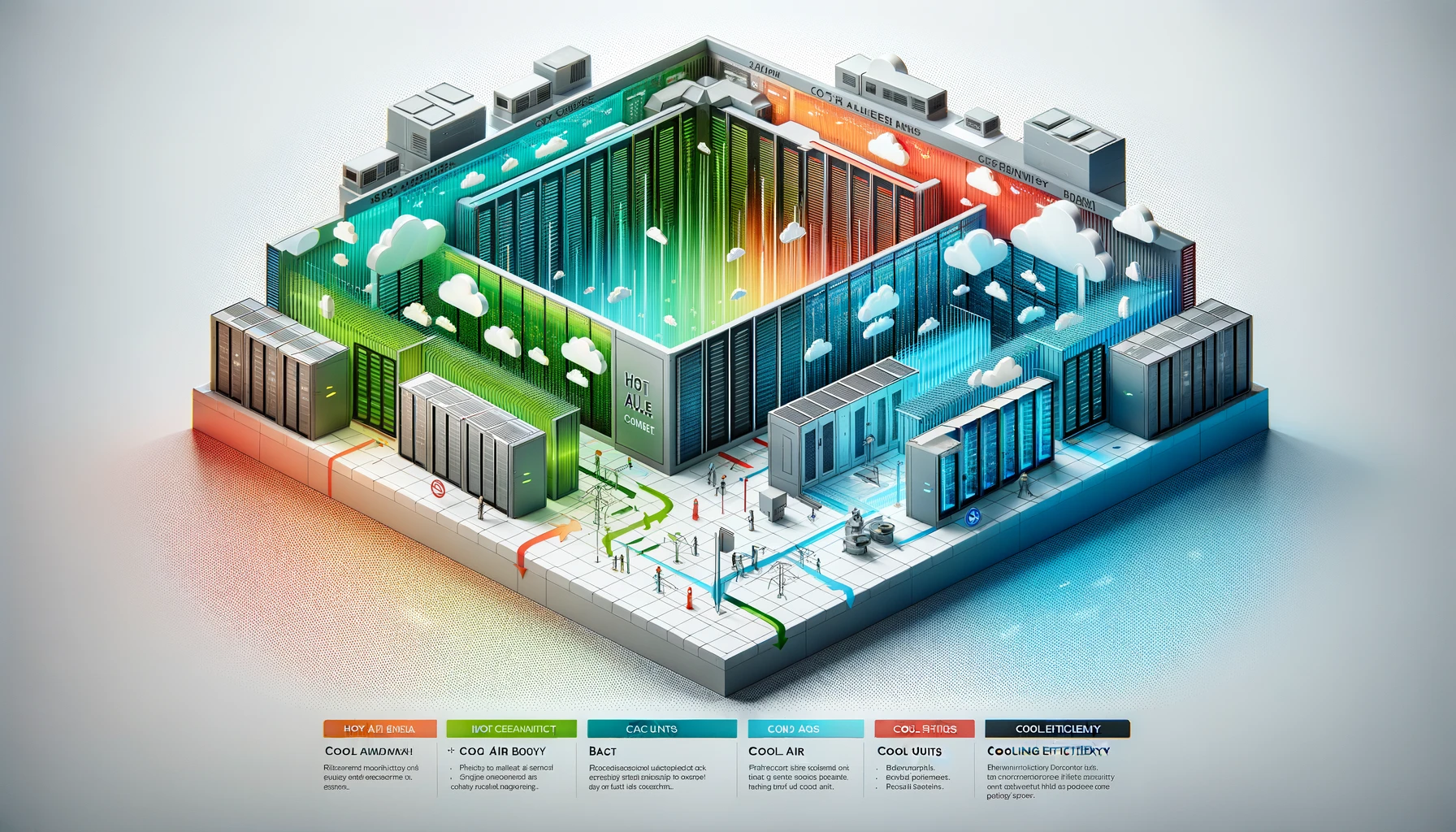
Introduction to Redundant Internet
In today’s fast-paced digital era, the reliability and consistency of internet connectivity are more crucial than ever. The concept of Redundant Internet is crucial, involving backup systems that ensure continuous online access and consistent network reliability. This is especially critical for businesses and essential services, where downtime can lead to significant financial losses, eroded customer trust, and service disruptions.
Redundant Internet setups are customized solutions, involving various technologies and strategies to mitigate specific internet connectivity risks. These systems often encompass multiple ISPs, diverse routing paths, and automatic failover mechanisms to maintain an active and stable connection.
The Evolution of Internet Redundancy
The evolution of redundant internet systems is a testament to the remarkable technological advancements in the field of digital connectivity. In the early stages, the concept of redundancy in internet connections was perceived as a luxury, predominantly accessible to large corporations with substantial resources. These entities recognized the critical need for uninterrupted online presence, primarily to support their expansive operations and global communications.
However, as the digital era progressed, the landscape began to shift dramatically. The burgeoning reliance on digital connectivity transcended the boundaries of large corporations, permeating businesses of all sizes and sectors. This shift marked a pivotal change in the perception of redundant internet systems – transforming them from a luxury to an essential component of modern business infrastructure.
This transformation was fueled by the growing demand for high-availability systems. Businesses and organizations, regardless of their size, began to recognize the importance of ensuring constant uptime and seamless network performance. Downtime, even for a brief period, could result in significant operational disruptions, financial losses, and damage to customer trust.
Key Components of Redundant Internet Systems
Redundant internet systems, crucial for ensuring network reliability and efficiency, are underpinned by several critical components. Each element plays a distinct role in creating a resilient and robust network infrastructure capable of withstanding various challenges and disruptions.
Hardware Redundancy
This is the cornerstone of any redundant system. It involves deploying multiple routers, switches, and diverse cabling routes to create physical path diversity. This setup ensures that if one hardware component fails, others seamlessly take over, maintaining network availability. Hardware redundancy involves more than duplication; it includes strategic placement and integration for optimal performance and failover efficiency.
Software Solutions
The role of software-defined networking (SDN) and network function virtualization (NFV) is increasingly pivotal. These technologies allow for more agile and efficient management of network traffic and resources. They enable dynamic routing and support automatic failover protocols, which are vital for uninterrupted service. SDN and NFV offer flexibility in network management, allowing for real-time adjustments and optimizations that traditional hardware-centric networks cannot easily achieve.
Load Balancing
This technique is essential for distributing network traffic across multiple servers or connections.
Load balancing boosts internet performance and reliability, preventing single points of failure. It enables networks to manage high data traffic volumes efficiently, avoiding bottlenecks and service degradation, crucial for businesses with substantial data needs.
Backup Internet Solutions
The implementation of secondary internet connections, such as satellite, cellular, or alternative wired services, provides a crucial safety net. These connections offer an alternative path for data transmission, ensuring continuity of service if the primary connection fails. This redundancy is particularly important in areas prone to natural disasters or where primary internet services are less reliable.
Cloud Redundancy
The advent of cloud computing has introduced an additional layer of redundancy. Cloud redundancy ensures that critical data and applications are replicated in multiple cloud environments or geographical locations. This approach safeguards against data loss due to local hardware failures, natural disasters, or cyber-attacks, ensuring data availability and business continuity.
Service Level Agreements (SLAs)
SLAs form a contractual foundation between businesses and service providers, outlining the expected level of service. These agreements are particularly crucial in redundant internet systems, as they define specific parameters like uptime, performance metrics, and response times in the event of an outage. They provide a framework for accountability and quality assurance, ensuring that the service provider meets the agreed-upon standards.
Collectively, these components form the backbone of redundant internet systems. They ensure that such systems are not only robust and reliable but also scalable and adaptable to the evolving needs of modern businesses. The integration of these elements requires careful planning and execution to achieve an optimal balance between performance, cost, and reliability. As businesses increasingly rely on uninterrupted internet connectivity, the strategic implementation of these components becomes essential for operational resilience and competitive advantage.
Benefits of Implementing Redundant Internet
Implementing redundant internet systems brings a multitude of benefits, crucial for modern businesses that rely heavily on digital connectivity. The most significant advantage is the enhanced network reliability and the assurance of business continuity. In today’s digital landscape, where data and online presence are invaluable assets, a fail-safe internet setup is not just a luxury but a necessity. Such systems ensure that business operations can continue seamlessly, even in the face of unforeseen network failures. This aspect of reliability is particularly vital in sectors like finance, healthcare, and e-commerce, where any amount of downtime can lead to substantial financial losses, damage to reputation, and erosion of customer trust.
Redundant internet systems are also integral to effective disaster recovery planning. In scenarios like natural disasters, power outages, or cyber-attacks, these systems provide the necessary resilience to maintain operations and safeguard sensitive data. The ability to quickly recover from such incidents is crucial in maintaining the integrity and continuity of business services. Furthermore, the implementation of high-availability systems supports critical functions like load balancing. This not only optimizes network performance by efficiently distributing traffic across multiple servers or connections but also enhances the overall user experience. It ensures that the network can handle high traffic volumes without compromising on speed or accessibility.
Challenges and Considerations
While the benefits of redundant internet are clear, there are challenges and considerations to be addressed. The primary concern is the cost associated with setting up and maintaining such systems. Implementing physical redundancy requires investment in additional hardware, software, and possibly increased service fees for backup internet connections.
Additionally, the complexity of managing redundant systems should not be underestimated. It requires expertise in network design and management to ensure that the redundancy mechanisms function correctly and efficiently. Businesses must weigh the cost against the potential risks of downtime to determine the appropriate level of redundancy needed.
Another consideration is the selection of appropriate technologies and service providers. The choice of backup internet solutions, for instance, should align with the organization’s specific needs and operational demands. Furthermore, ensuring compatibility between different components and maintaining up-to-date configurations are essential for the effective functioning of redundant internet systems.
Case Studies: Successful Redundant Internet Implementations
The implementation of redundant internet systems across various industries has proven to be a game-changer, showcasing their value and effectiveness in maintaining continuous operations. These systems have been particularly beneficial in sectors where reliability is non-negotiable, such as finance, healthcare, and e-commerce.
Financial Institution
A notable example is a major financial institution that embraced a dual-internet connection equipped with automatic failover protocols. This innovative approach was crucial during a significant network outage, as it ensured uninterrupted service. The institution was able to maintain critical operations and customer transactions seamlessly, demonstrating the robustness of their network infrastructure in the face of adversity.
Healthcare
In the healthcare sector, the stakes are incredibly high when it comes to network reliability. A hospital successfully adopted a redundant internet system that incorporated load balancing and cloud redundancy. This multifaceted approach not only provided a steadfast internet connection but also guaranteed the availability and security of sensitive patient data. During an unexpected regional network failure, the hospital’s systems remained fully operational, a testament to the resilience and foresight in their network planning.
E-Commerce
The e-commerce industry, known for its high traffic volumes, especially during peak seasons, presents another compelling case. An e-commerce company implemented a strategy that involved multiple backup internet solutions and data redundancy in the cloud. This approach was instrumental in handling the surge in online traffic and maintaining a continuous online presence, even amidst internet disruptions. Their ability to stay operational and accessible during critical times helped in preserving customer trust and avoiding potential revenue losses.
These real-world examples underscore the strategic importance of redundant internet systems. They highlight how such systems are crucial in ensuring business continuity, protecting vital data, and maintaining customer trust. In the financial sector, the uninterrupted operation is key to preserving market integrity and customer confidence. In healthcare, continuous network access is vital for patient care and data security. For e-commerce platforms, consistent online availability directly impacts sales and customer satisfaction.
Furthermore, these case studies illustrate the versatility of redundant internet systems. They can be tailored to meet the specific needs of different industries, whether it’s handling high-frequency trading in finance, supporting telemedicine in healthcare, or managing online retail traffic. This adaptability is crucial in a world where technological needs are constantly evolving.
Future Trends in Internet Redundancy
The future landscape of internet redundancy is poised to be significantly influenced by emerging technologies and the evolving needs of businesses in a digitally-driven world. Advancements in artificial intelligence (AI) and machine learning are expected to play a pivotal role in enhancing the automation and optimization of redundant internet systems. These technologies promise to bring about smarter routing decisions, enabling networks to adapt dynamically to changing conditions. Predictive maintenance, powered by AI, could foresee potential network issues and mitigate them before they impact connectivity. Additionally, real-time adjustments to network configurations, facilitated by machine learning algorithms, will ensure optimal performance at all times.
The burgeoning integration of Internet of Things (IoT) devices is another trend set to reshape the redundant internet landscape. As the number of connected devices continues to skyrocket, the demand for more robust and scalable redundant internet solutions will become increasingly critical. These solutions will need to manage the growing volume of data and heightened connectivity demands efficiently, ensuring seamless communication between a myriad of devices.
FAQs on Redundant Internet
Q1: What is redundant internet? A: Redundant internet refers to the implementation of backup systems and strategies to ensure continuous internet connectivity, especially in the event of primary service failures.
Q2: Why is redundant internet important for businesses? A: It ensures network reliability, minimizes downtime, and supports business continuity, which is crucial for maintaining operations and customer trust.
Q3: What are the key components of a redundant internet system? A: Key components include hardware redundancy, software solutions for dynamic routing, backup internet solutions, cloud redundancy, and Service Level Agreements (SLAs).
Conclusion: The Role of Redundant Internet in Modern Connectivity
In conclusion, the role of redundant internet as a fundamental element of modern network infrastructure is undeniably crucial. Its significance in bolstering network reliability, underpinning high-availability systems, and ensuring business continuity is paramount. In an era where digital connectivity is the backbone of virtually every operation, the ability to maintain an uninterrupted online presence is not just a convenience, but a necessity for survival and success.
As we progress further into a digitally interconnected world, the reliance on robust internet systems will only escalate. The rise of cloud services, remote work, and online commerce intensifies the need for reliable internet. In this context, redundant internet systems are vital for both disruption prevention and gaining a competitive edge.
The importance of these systems extends beyond mere operational continuity. They are pivotal in managing risk, protecting against data loss, and ensuring customer satisfaction. Businesses that recognize and invest in redundant internet infrastructure demonstrate foresight and a commitment to resilience. They are better positioned to navigate the challenges of an ever-evolving digital landscape, where the cost of downtime is increasingly high, both in financial terms and in terms of reputation.




